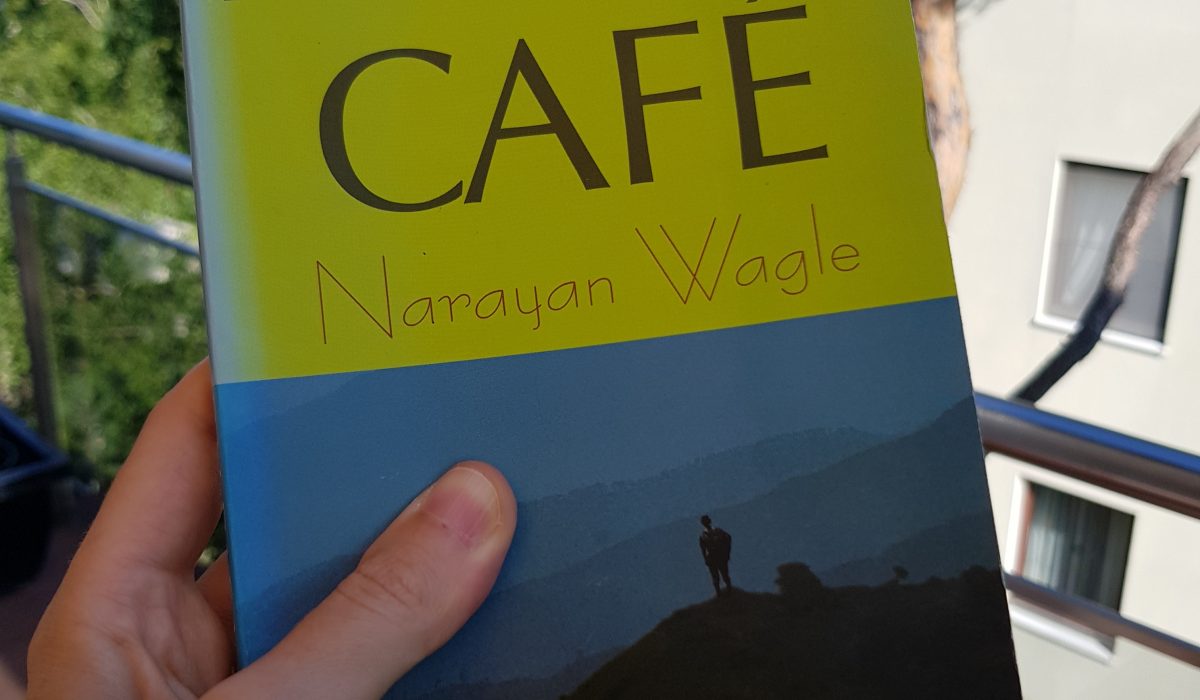
Eight years ago, I received a parcel from a friend who was then living in Kathmandu, Nepal. It contained a Nepali best-selling novel “Palpasa Cafe” (2005) and a little souvenir: a package of red crystal dots worn by Nepali women on their foreheads. Only this summer, however, I’ve decided to go for this inconspicuous book which edge has slowly begun fading on my sunlit bookshelf. I’ve recently read “Palpasa Cafe” with the upcoming Oriental Book Club in mind. I feel this novel is a perfect choice for the meeting. And, very exotic!
“Palpasa Cafe” has effectively stirred my imagination and made me wonder about a remote country and culture. Following the story of the novel’s protagonist, Drishya, I got an insight into Nepal’s recent history (especially the 1996-2006 tragic Nepalese Civil War); the country’s mountainous countryside and picturesque natural landscapes; as well as modern Kathmandu. I was also able to look at the Western world through the perspective and imagination of Drishya, a contemporary Nepali artist. In fact, I got to treat this book as a convincing commentary on art and on leading an artistic life. Page by page we see how Drishya is growing to become a true artist; an artist with his own unique style. Nepal’s tragic political situation, and the losses Drishya experiences as a result of the war, undoubtedly impact his artistic output and nature.
The Nepali Times aptly described Narayan Wagle’s story as “a powerful anti-war novel.” As the reader gradually gets to know Drishya, an easy-going, mindful and uncorrupted painter, who mainly concentrates on his work, the war in the background indeed seems senseless and mindless. Why does this innocent individual have to experience absurd and tragic events entirely independent of him and his free-spirited lifestyle? In fact, “Palpasa Cafe” compellingly opposes art, personalized by Drishya, to war. The latter being the recent Nepalese Civil War between Maoists (Communists) and the country’s traditional government.

I’ve never been to Nepal and I don’t hold any mental image of this country. However, “Palpasa Cafe” did manage to draw a certain picture of Nepal before my eyes. The author makes the reader imagine Kathmandu as a dense and thriving settlement inside a green foggy valley surrounded by hills. He portraits the metropolis as a vibrant city in motion and progress, torn between the pursuit of the Western world and firm belonging to what is traditional and innate. On the one hand, Kathmandu is described as an “unplanned concrete city” and, on the other hand, as a place where love and blue jacaranda trees blossom in full. It is the centre of hope and chance, where the curious and the driven can spread their wings. It constitutes the educational hub of Nepal, education being, in the eyes of the author and narrator, the great value able to uplift the nation.
Even though Drishya treks the Nepali countryside in the midst of war, his artistic nature inclines him to concentrate on beauty. His romanticism obscures reality; it veils the blood and the mines he encounters on the way. The route takes him from village to village through a magnificent mountainous landscape. He passes groups of farmers carrying dokos (baskets) on their backs, orchards of oranges, yellow mustard fields, red rhododendron forests, and coffee plantations. Due to the sensible conflict, he sees these riches as threatened, and, therefore, even more dear. Following Drishya on his route, the idiosyncratic beauty of Nepal spreads out before us.
At times, while reading the book, I was wondering to what extent the author (or the translator?) can be regarded as a “professional writer”? Some fragments (style- and storywise) seem almost naive, as if not written by someone sufficiently skilled in writing literature. Strangely enough, this did not put me off, as I simply b e l i e v e d the story and its hero, and found them to be t r u e. I was able to step into Drishya’s shoes and look at the world through his lenses. In the end, isn’t that what matters most in a book? (Speaking of “naive,” possibly Wagle has been lucky and wise enough not to attend creative writing classes.) What persuaded and moved me, is Wagle’s subtle and poetic prose. The author “paints” idealised and peaceful images that indeed serve as a powerful pacifist voice.
